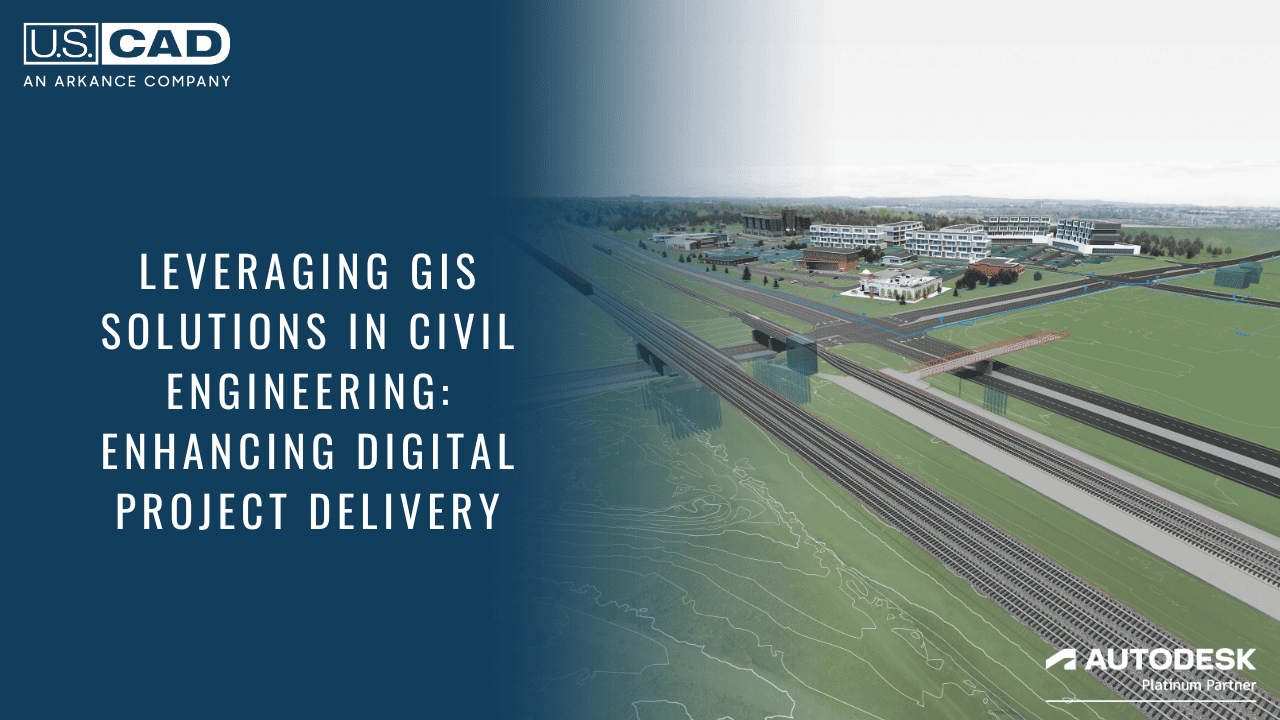Blogs and News
Connecting the Dots; Resolving Disconnects
The design and construction of any asset, no matter scope or scale, requires a truly unique mix of people, technologies and techniques. For Andrell Laniewicz, successfully supporting those working in this environment necessarily requires cross-discipline experience as well. She started her journey with a Master of Architecture degree from the Savannah College of Art and…
A Q/A with the Experts About the Evolving BIM Ecosystem
BIM managers, engineers, architects and others joined BIM experts to get answers about top-of-mind questions or concerns around BIM workflows, tools and techniques. In the Ask the Experts – Bring Method to the Madness webinar, experts focused on tips and best practices for making the most of BIM on projects of all scopes and scale….
ARKANCE and its Subsidiary U.S. CAD, Acquire CADD Microsystems, and Extend Leadership and Coverage as a National Player in the USA
April 9, 2024, PARIS, France & IRVINE, California – ARKANCE and its subsidiary U.S. CAD in the United States, a leading provider of technology and services to the architecture, engineering, construction, and owner-operator (AECO) industry, today announced the acquisition of CADD Microsystems, a United States-based consulting and software firm specializing in the design, build, and…
Lean Into Change!
The Escalating Importance of the Agile AEC Professional When it comes to business growth, many AEC firms strive to diversify their businesses by breaking into more complex project types. These might include institutional, healthcare, labs, science and data centers. It’s a worthy endeavor as these are stable sources of future work, but they’re also notoriously…
Leveraging GIS Solutions in Civil Engineering: Enhancing Digital Project Delivery
Geographic Information Systems (GIS) solutions are becoming increasingly important in civil engineering, an industry where precision and efficiency are crucial. Esri and Autodesk have taken this to heart, working to optimize and build user-friendly, robust platforms that will streamline workflows, improve decision-making processes, and, ultimately, enhance project outcomes. Let’s look at three important benefits of GIS solutions, with…
A New Framework of Productivity in Our New Distributed, Digital Reality
Unified platforms, such as the Autodesk Construction Cloud, have been essential for enabling communication and collaboration amongst project teams, particularly during and post-pandemic. But many don’t realize that these digital ecosystems are much more than data vaults; they are productivity enablers. Understanding your team’s productivity is essential to schedules and budgets, a task that is…
An Expert Economist’s Perspective: Ups, Downs and Emerging Opportunities in 2024
While the construction outlook for 2024 is largely positive, a few ongoing challenges combine with emerging disruptions threaten industry growth. In a recent webinar with U.S. CAD, Ken Simonson, chief economist at Associated General Contractors of America, provided a detailed short- and long-term outlook on the current market trends. In particular, he focused on…
Navigating the Digital Horizon: Trends and Transformations in Government and Private Sectors
Explore the rising prevalence of digital delivery, the shift from paper-based workflows, and key developments in 2024 shaping the future of civil engineering. Digital delivery is becoming increasingly prevalent in the government and private sectors, with agencies embracing this trend and a growing interest in its implementation. While the traditional use of paper for project…
A Pipeline for Accurate Optimized Fabrication Models
The FAB360 fabrication database solution from ENGworks Global is a purpose-built solution designed to improve workflows and modeling accuracy in sheet metal and piping fabrication. The database includes manufacturer-specific, certified content from over 38 manufacturers to support the development of construction-ready models and shop drawings. The developers leveraged certified CADmep™ / Revit® (ITMs/RFAs) to ensure…
U.S. CAD, An ARKANCE Company, Honored as Exceptional Partner at the Bluebeam Global Channel Forum
February 15, 2024, IRVINE, California – U.S. CAD, An ARKANCE Company, was honored with the Bluebeam Partner of the Year Award at the invitation-only Bluebeam Global Channel Executive Forum last week held in Orlando, FL. The Partner of the Year Award demonstrates the relationship between the company, Bluebeam, and customers and celebrates U.S. CAD’s ability…










